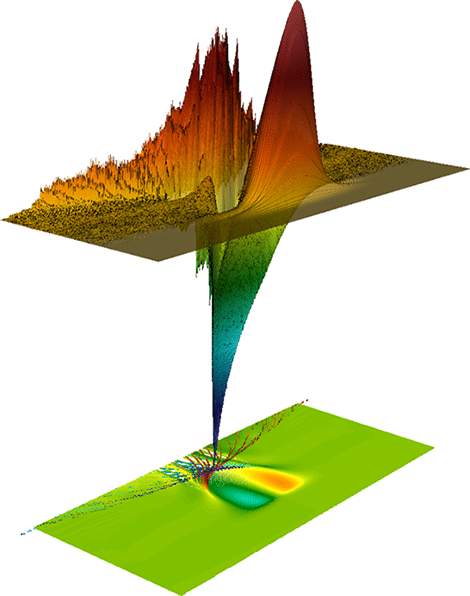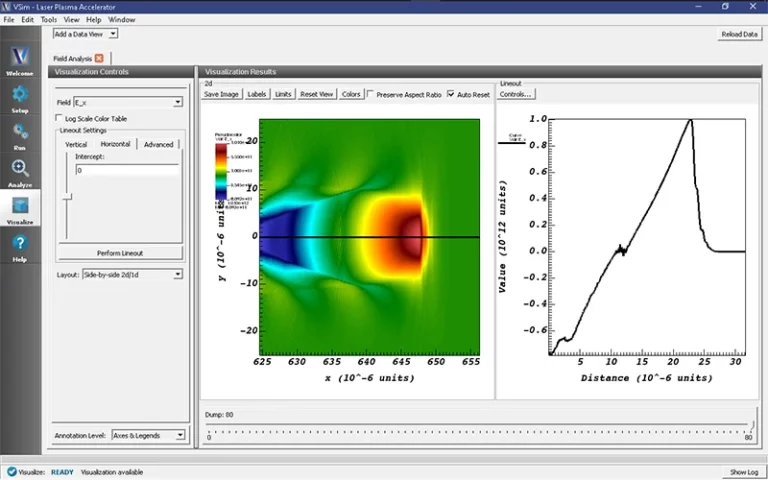
VSimPA For Plasma Acceleration Simulations
VSimPA is a comprehensive software solution for scientists and engineers working on plasma acceleration simulations and techniques. Users of VSimPA can run numerical experiments with ionization injection, colliding pulse injection, and down-ramp injection. In addition, by including reduced methods like the envelope approximation with or without phase tracking, VSimPA can model Laser-Wakefield Field Acceleration (LWFA) into depletion without fully resolving the laser wavelength and controlled dispersion algorithms limit numerical artifacts.
VSimPA’s computational engine, VORPAL, has been used for multiple scientific discoveries, including the first Dream Beam discoveries, stable GeV acceleration, density-gradient injection, and the more recent Trojan Horse simulations. With thousands of literature citations since first described in 2004, VSimPA is the most frequently cited code capable of modeling plasma acceleration and the most trusted tool for plasma acceleration research.

"我们小组改用 VSim 来满足我们所有与加速器相关的模拟需求。该软件的功能非常强大,它的用户友好界面对加速器科学家来说是很自然的,Tech-X公司的人提供的支持也是极大的。"
Sandra Biedron
Fellow of the American Physical Society
Recipient of the 2018 Particle Accelerator Science and Technology Award
准备了解更多吗?
VSimPA的优势
- FDTD Plasma Acceleration Simulation
- PIC algorithms for kinetic plasma
- 高性能计算能力
- 记录的准确性
- 一流的等离子体加速仿真软件代码
- 强大的后处理
- 与所有VSim模块无缝整合
- 强大的文档和教程
- 卓越的客户支持
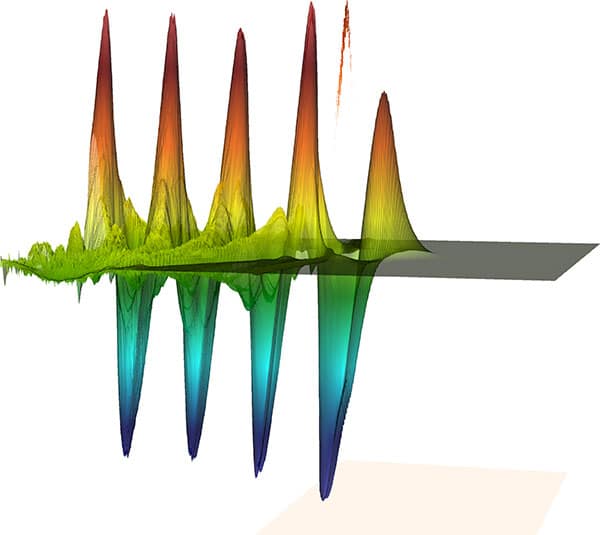
Plasma Acceleration Problem?
Ready To Get Started?
Plasma Acceleration Examples
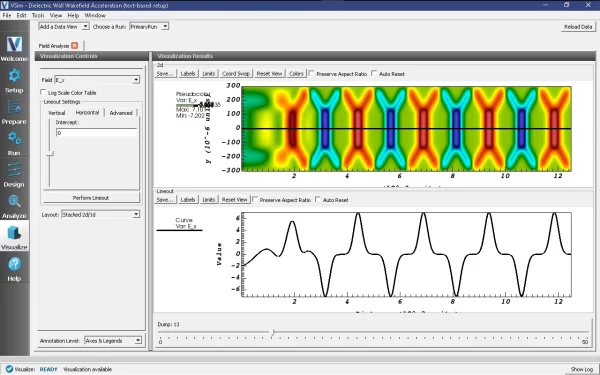
Dielectric Wall Wakefield Acceleration
An alternative to a full particle in cell approach for accelerator computations is to use a prescribed beam, that is to set the J field directly without using a vector deposition of the current associated with the charge. This is demonstrated in this example which computes the wakefields in a dielectric lined waveguide.
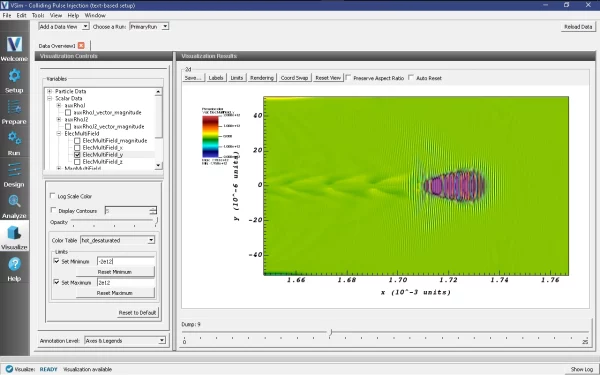
Electron Beam Driven Plasma Wakefield
This example demonstrates the use of VSim to simulate controlled injection in a laser-plasma accelerator using colliding laser pulses [CMRB+10]. Two laser pulses are launched from opposite sides (one from the left side and the other one from the right side of the box) and propagate in opposite directions.
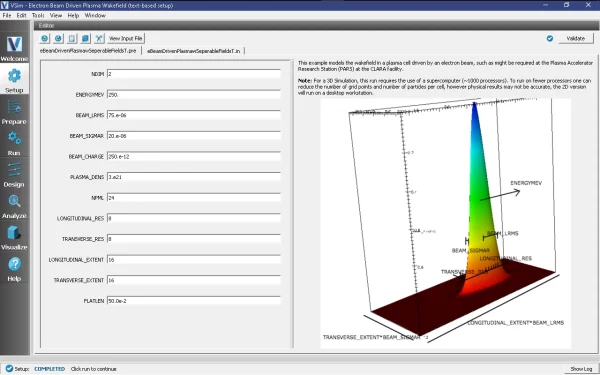
Electron Beam Driven Plasma Wakefield with Seperable Fields
This example demonstrates a method to simulate an electron beam driven plasma wakefield accelerator. The electron beam initializes the field using a speed of light frame Poisson equation solve, then the fields and particles are evolved using FDTD EMPIC.
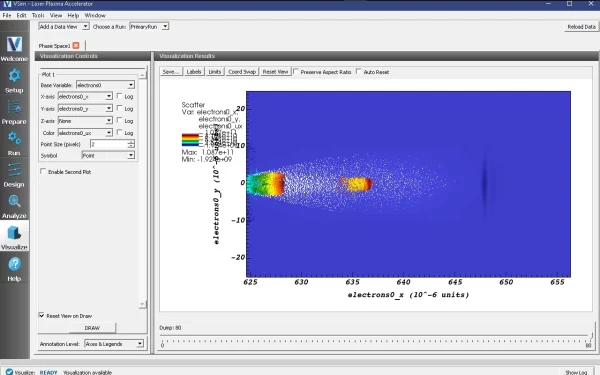
Laser Plasma Accelerator
Simulate a simple laser-plasma accelerator problem using the full PIC algorithm. An intense, short laser pulse propagating through a plasma can lead to the separation of electrons and ions capable of producing accelerating electric fields of hundreds of GV/m [GTVT+04]. VSim is capable of simulating laser plasma accelerators (laserPlasmaAccel) using several different models: envelope, fluid and full particle-in-cell (PIC).
